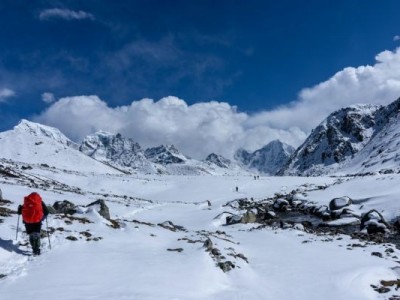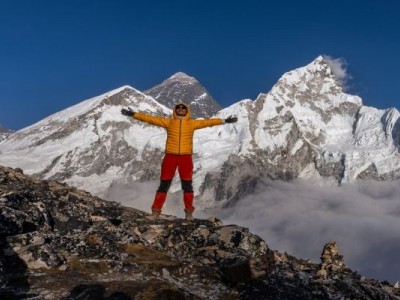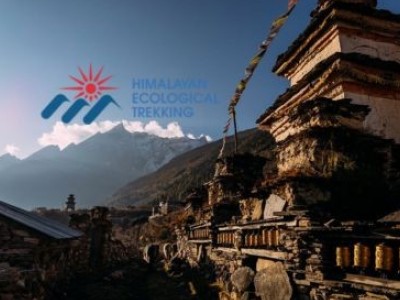Langtang Valley Trek Costs
The total cost of the Langtang Valley trek will vary based on a number of factors, including your nationality, your travel style, and the duration of your trek. Below, you will find an in-depth breakdown of costs for international and local travelers, so you can plan your budget effectively.
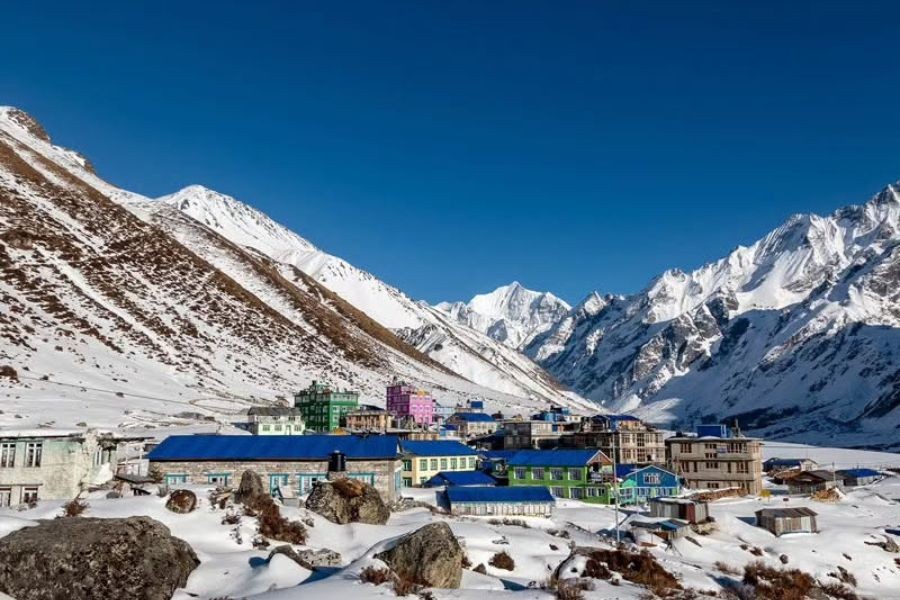
Total Estimated Cost For International Travelers (USD)
As an international trekker, here’s an estimation of your costs for the Langtang Valley trek:
Cost of Permits for the Langtang Valley Trek: $40 - $50
For international trekkers, two major permits are required to trek in Langtang Valley:
- Langtang National Park Entry Permit: $30 (approximately NPR 3,900)
- TIMS Card (Trekkers’ Information Management System): $10 - $20 (approximately NPR 1,300 - 2,600)
These permits serve to legally access the trekking routes and make a contribution to the maintenance of the national park. These permits can be acquired in Kathmandu before your trek. This can be arranged through a trekking agency or the Nepal Tourism Board office.
Transportation Cost on the Langtang Valley Trek: $40 - $60
Transportation costs include travel from Kathmandu to Syabrubesi (the start of the trek) and back:
- Local bus (one way): $5 - $8 (approx. NPR 650 - 1,040)
- Private jeep (shared, one way): $15 - $20 (approx. NPR 1,950 - 2,600)
- Private jeep (exclusive): $100 - $120 round trip (approx. NPR 13,000 - 15,600)
Most trekkers select local buses or shared jeeps to save money. Travel time to/from Syabrubesi is 7-8 hours based on road conditions.
Accommodation Cost on Langtang Valley Trek: $70 - $150
Tea houses and lodges along the Langtang trail offer basic but decent-selling accommodation:
- Per night cost: $3 - $10 (approx. NPR 390 - 1,300)
- Total for 7-9 nights: $70 - $150
Accommodation may become slightly more expensive at higher altitudes. Most tea houses have simple rooms with twin beds and shared bathrooms with other trekkers. During the peak season (spring and autumn), prices are raised by a small amount, and pre-booking through your guide is advisable.
Food Cost on the Langtang Valley Trek: $150 - $250
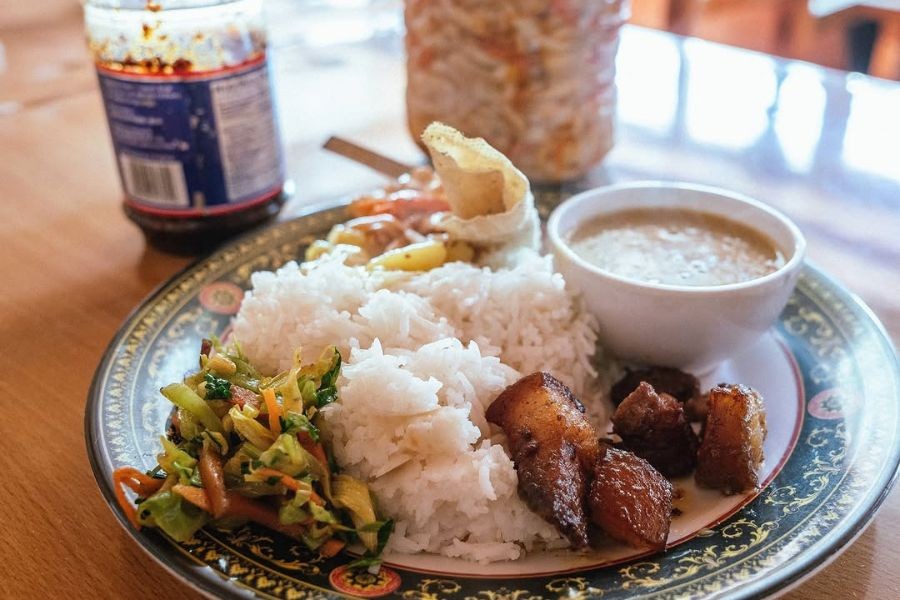
The food cost on the Langtang Valley trek covers three meals per day plus hot beverages:
- Breakfast: $3 - $5 per meal
- Lunch: $4 - $7 per meal
- Dinner: $5 - $8 per meal
- Hot drinks (tea/coffee): $1 - $3 per cup
- Bottled/boiled water: $1 - $3 per liter
Daily food expenses typically range from $20 - $30. Menu prices increase as you gain altitude due to transportation challenges. Dal Bhat (traditional Nepali meal) often comes with free refills and provides the best value for money.
Miscellaneous Expenses: $50 - $100
Additional costs to consider:
- Hot shower: $2 - $5 per use
- Battery charging: $2 - $4 per device
- WiFi access: $3 - $5 per day
- Snacks and treats: $20 - $30
- Porter service (optional): $15 - $20 per day
- Guide service (optional): $25 - $30 per day
- Tips for guides/porters: $50 - $100
- Travel insurance: $50 - $100
Guide Service (Mandatory): $175 - $210
Solo trekking has been banned as of April 1, 2023, for foreign trekkers in Nepal. All trekkers from outside of Nepal must trek with a licensed guide in national parks and conservation areas, including Langtang Valley, in order to enhance trekker safety and support local tourism employment.
- Licensed guide fees: $25-$30/day
- Total for a 7-day trek: $175-$210
- Trekkers typically pay for their guide’s food and accommodation
ESTIMATED TOTAL COST FOR INTERNATIONAL TRAVELERS: $525-$820
This total now includes the required guide. Package tours, available from trekking agencies, cost about $600-$1,000 and will include permits, guide, porter (optional), accommodation, and meals, often presenting better overall value than making all the arrangements yourself.
For a budget-friendly Langtang Valley Trek, you can contact us at Himalayan Ecological Trekking. You can directly contact our export guide, Bikesh Rana, to inquire.
Inquire Now: [email protected]
Expert Consultation: WhatsApp: +977 9851006023 (Bikesh)
Total Estimated Costs for Local Travelers (NPR)
Langtang Valley trek costs considerably less for Nepali origin due to reduced permit fees and familiarity with local transportation.
Langtang Valley Trek Permit Fee: NPR 100
Local trekkers receive big discounts on permits:
- Langtang National Park Entry Permit Fee: NPR 100
Nepali-origin travelers receive big discounts on permits, making the trek very affordable.
Langtang Valley Trek Transportation Fee: NPR 1,400 - 2,000
Local travelers typically obtain transportation on public transport:
- Bus (one way): NPR 650 - 1,000
- Shared jeep (one way): NPR 800 - 1,200
Traveling round-trip is generally NPR 1,400 - 2,000, reasonable for a domestic traveler.
Langtang Valley Trek Accommodation Fee: NPR 5,000 - 7,000
Local accommodation fees:
- Per night for accommodation: NPR 200 - 500 (often negotiable for Nepali origin)
- Total for 5-7 days: NPR 5,000 - 7,000
During the off-season period, local people may be able to negotiate a better price with local tea house owners, especially with longer visits. Many tea houses may also offer discounts for domestic trekkers.
Food Cost on the Langtang Valley Trek: NPR 7,000 - 10,000
Daily Meal Costs for Local Trekkers:
- Breakfast: NPR 150-250
- Lunch: NPR 200-350
- Dinner: NPR 250-400
- Coffee: NPR 30-100
- Water: NPR 30-100
Local trekkers will spend about NPR 800-1,200 each day for food. Since you can get free refills with Dal Bhat, the average daily costs for food can be much lower when ordering it.
Miscellaneous Costs: NPR 2,000-4,000
Additional costs include:
- Hot shower: NPR 100-200 per use
- Battery charging: NPR 100-200
- Wi-Fi: NPR 150-300 per day (optional)
- Snacks: NPR 800-1,500
- Emergency money: NPR 1,000-2,000.
TOTAL ESTIMATED COST FOR LOCAL TRAVELERS: NPR 15,450 - 23,300
A local trekker on a tight budget can easily finish the Langtang Valley trek for about NPR 16,000. This amounts to around $120 - $175, which is quite low-cost and reasonable for Nepalese residents who stay in basic accommodation, eat mostly Dal Bhat, and try to limit any optional expenses.
Best Time to Trek Langtang Valley
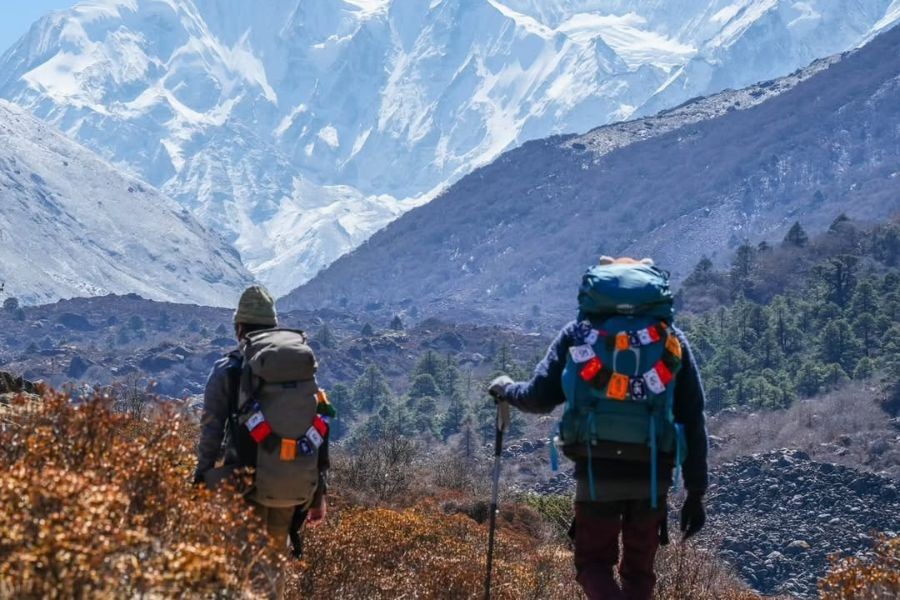
Selecting the right season to trek will have a significant effect on your experience and price. Although the Langtang Valley trek can be completed at any time of year, some trekking seasons may yield better conditions and greater value for money.
Spring season (March-May)
The spring season is the peak time to trek in the Langtang Valley; with stable weather, clear skies, and warmth, the rhododendron-rich forests along the trails will transform into vibrant and colorful valleys. Here is what to expect to experience spring trekking conditions:
- Clear visibility for mountain views
- Averaged daytime temperatures between (15-20 °C at lower altitudes)
- Active wildlife and lush, diverse vegetation
- Higher than normal accommodation costs due to demand
- Crowded trails, typically busting in April
Autumn season (September-November)
Autumn is also a peak season to trek, with crystal clear mountain views right after the monsoon
The rains have passed. Here are the main features of trekking during Autumn:
- The best visibility of the year for photographic opportunities
- Stable regardless of rainfall
- Comfortable temperatures, for the most part
- Pricing closer to peak season
- Other trekkers from around the world
- Popular during significant cultural festivals, Dashain and Tihar
Winter Season (December to February)
Winter hiking in the Langtang Valley is perfect for adventurers who want to get away from everything:
- Accommodation is less expensive, and there are fewer people.
- The weather is cold (especially at night, with higher altitudes near -10°C to -15°C).
- The scenery is beautiful, as the mountains will be covered in snow.
- Some tea houses can be closed at higher altitudes and may not always be reachable.
- There is less daylight, so you have to get going earlier in the day.
- There is a risk of trail closures due to snow.
Rainy Season (June to August)
The rainy season offers its challenges, but offers a potential opportunity:
- The lowest accommodation and food costs.
- Torrential rains are creating slippery and treacherous trails.
- Mountain views obscured by clouds.
- The greenest aspects of the landscape and the fewest tourists.
- Some landslides are possible on approach roads.
- Best avoided unless you're a seasoned trekker.
For the best combination of weather, views, and trails, plan your Langtang Valley trek in the spring or fall/seasons typically considered better for trekking. However, consider shoulder seasons (late fall or early spring) if you have a significant Langtang trekking budget. Prices will typically drop at this time while conditions remain decent.
FAQs
Is the Langtang Valley trek expensive compared to other treks in Nepal?
No, the Langtang Valley trek is still one of the most inexpensive major treks in Nepal. It will be much less than the Everest Base Camp or Annapurna Circuit treks due to its shorter duration, closer destination to Kathmandu, and cheaper transportation.
Can I trek Langtang Valley independently without a guide?
No, as of April 1, 2023, all international travelers must legally hire a licensed guide for all treks located in national parks and conservation areas in Nepal, including the Langtang Valley. This is to enhance trekker safety and support communities. You could save some money by trekking in a group or joining a package tour, as they provide better value than arranging a trek independently.
Is a credit card accepted along the Langtang trek?
No, the Langtang Valley trek is cash-only. Make sure you carry enough cash in Nepali Rupees for your entire trek since there are no ATMs along the trek. The last ATMs are located in either Kathmandu or Trishuli Bazaar.
How much should I budget for tips?
If you hire guides and porters, you should budget for 10-15% of their total service fees as tips. For a week trek, this usually translates to between $50 $100 per guide and $30 $50 per porter. Tipping is customary and appreciated.
Does the Langtang Valley trek cost include travel insurance?
No, standard trekking fees do not cover travel insurance, but it is highly recommended. Make sure the travel insurance policy covers trekking to high altitudes (up to 5,000m), emergency evacuation, and medical expenses. Travel insurance can usually cost between $50-$150, depending on how much coverage you purchase.
When do accommodation costs increase?
Accommodation costs greatly increase during the spring (March-May) and autumn (September-November) seasons. Some tea houses may also charge additional amounts during certain major Nepali festival dates; we recommend booking in these instances through your guide.
Is it possible to pay in USD along the trek?
Some tea houses may accept payment in USD; however, it is important to note that the exchange rate is usually unfavorable. It is more economical to carry and pay in Nepali Rupees throughout the trek.
What are the costs included in the package tour costs?
Most organized Langtang Valley trekking packages ($500-$900) are likely to include permits, guide(s), porter(s) (one porter for a pair of trekkers), lodging, meals, and transportation from Kathmandu to the Langtang Valley trek departure point. Be sure to clarify the entire list of costs covered in the package before committing to a tour.
Conclusion
Understanding the Langtang Valley trek cost helps you plan a realistic budget and enjoy your Himalayan adventure without financial stress. For international travelers, expect to spend $525-$820, which includes the mandatory licensed guide service required since April 2023. Local trekkers can complete the trek for approximately NPR 16,000 (around $120), making it highly affordable for domestic travelers.
The Langtang Valley trek expenses vary based on your travel style, season, and preferences. International trekkers can manage costs by choosing local buses, basic accommodation, and joining group treks, while those seeking comfort can opt for private transportation and premium tea houses. Regardless of your budget, the Langtang Valley promises unforgettable experiences—from witnessing towering peaks like Langtang Lirung to immersing yourself in Tamang culture.
Ready to embark on your Langtang adventure? Start planning your trek today and experience the magic of the Himalayas!



